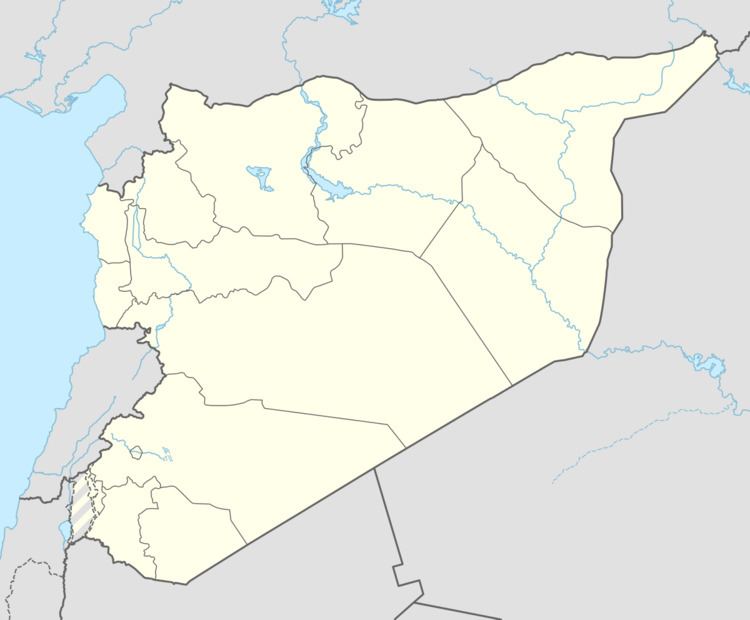Nahiya al-Shajara | Population 6,572 (2004) | |
 | ||
Occupation Islamic State of Iraq and the Levant | ||
Saham al-Jawlan (Arabic: سحم الجولان, Saḩam al Jawlān), also known as Saham el-Golan, is a Syrian village in the Daraa Governorate, in the Hauran region. It had a population of 6,572 in 2004. Most residents work in the cultivation of cereals, olives and vegetables.
Contents
Map of Sahem El Golan, Syria
Antiquity
The village has remains dating back to the 4th century. It is also believed to be the biblical city of Golan.
Ottoman period
In 1596 Saham al-Jawlan appeared in the Ottoman tax registers as part of the nahiya of Jawlan Sarqi in the Qada of Hauran. It had a Muslim population consisting of 22 households and 15 bachelors. Taxes were paid on wheat, barley, summer crops, goats and/or beehives.
Zionist activity
In 1891, the Agudat Ahim society headquartered in Yekatrinoslav, Russian Empire, acquired 100,000 dunams of land in Saham al-Jawlan for Jewish agricultural settlement. Due to the Turkish ban on land purchase by Palestinian Jews, the permits were acquired by Baron Edmond de Rothschild. In 1895, the village of Tiferet Binyamin was established on the land, but the Jews were forced to leave in July 1896, when the Ottomans evicted 17 non-Turkish families and issued an order that led to the expulsion of all East European Jews from the Golan Heights. A later attempt to settle the site with Syrian Jews, who were Ottoman citizens, was not successful. In 1921–1930, during the French Mandate, the Palestine Jewish Colonization Association (PICA) obtained the deeds to the Rothschild estate in Saham al-Jawlan and continued to manage it, collecting rent from the Arab peasants living there.
